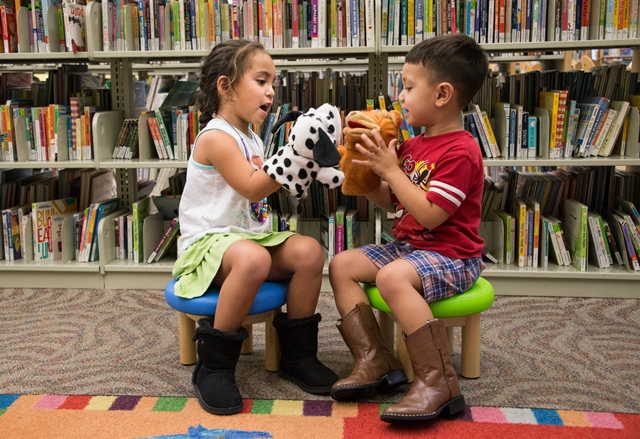
Talking to Kids about Emotions
Emotions can be messy and bubble up at inconvenient times. Helping children process and articulate what they are experiencing is a life skill that they can carry into their future and may strengthen the connections they make in the world. Knowing what they are feeling and knowing what to do with those feelings can have a major impact on how children get along with their peers and teachers.
Tips for Talking about Emotions
Here are three tips for talking about emotions with children.
Observe Others
Observe others and talk about what you see:
- That person looks so happy, look at that big smile.
- She looks really upset right now. She's making fists with her hands.
Ask Questions
Ask questions about what might be causing that emotion:
- If you felt angry with a friend, what could you do?
- Do you make better decisions when you feel angry or when you feel calm?
- What helps you calm down when you are feeling angry or upset?
Read and Share Stories
Read and share stories about the diverse set of emotions in our lives.
Picture books are a great way to start the conversation or even to simply find the words to help a child explore their world of emotions. Emotions can be clear-cut and sometimes they can be fuzzy and gray.
Picture books are a great vehicle for discovering worlds of different emotional states and experiences for children to explore in a safe space.
Reading Recommendations
Here are few recommendations for not only naming emotions, but also on finding ways to deal with those emotions after they've been identified.
The Rabbit Listened by Cori Doerrfeld
When Taylor's block castle is destroyed, all the animals think they know just what to do, but only the rabbit quietly listens to how Taylor is feeling.
How to use this book:
This book is a reminder that sometimes children need time and space to really experience their feelings before they are ready to talk about it and look for a solution. Geared for both grown-ups and children, this book teaches a valuable lesson in how to be there for someone during a rough time.
Grumpy Pants by Claire Messer
Penguin is having a grumpy day and doesn't know why. Slowly he finds out that sometimes the best thing to do is to wash the grumpy day away and start all over.
How to use this book:
This book is a wonderful way to start the conversation about feelings that aren't tied to event or reason. Sometimes we all just have a bad day, but its not the end of the world. There are lots of different ways to shed a bad mood and start all over. Grown-ups and children can share and discover coping methods for getting out of a bad mood.
Breathe Like a Bear by Kira Willey
This book provides thirty different exercises help readers find calm, gain focus, and feel energized during the day.
How to use this book:
This title provides a mix of breathing exercises and mindful reflection exercises to help children focus in on their emotions. With a mix of breathing exercises and visualization exercises, this book can help both adults and children find an outlet for bubbling emotions, whether its anger, excitement or exhaustion.
Be Kind by Pat Zietlow Miller
When Tanisha spills grape juice all over her dress, her classmate wants to make her feel better and ponders the different ways in which they can be kind.
How to use this book:
After a little girl is left embarrassed after an incident at school, her classmate considers all the different possible ways of being kind. Maybe kindness is helping. Maybe kindness is greeting someone by their name or just by paying attention to what someone is telling you. Grown-ups and children can share and discuss the many different ways of caring and showing sympathy and kindness in their world. What are some ways of being kind that weren't mentioned in this book?


Add a comment to: Glad, Mad, Sad: Talking to Kids about Emotions